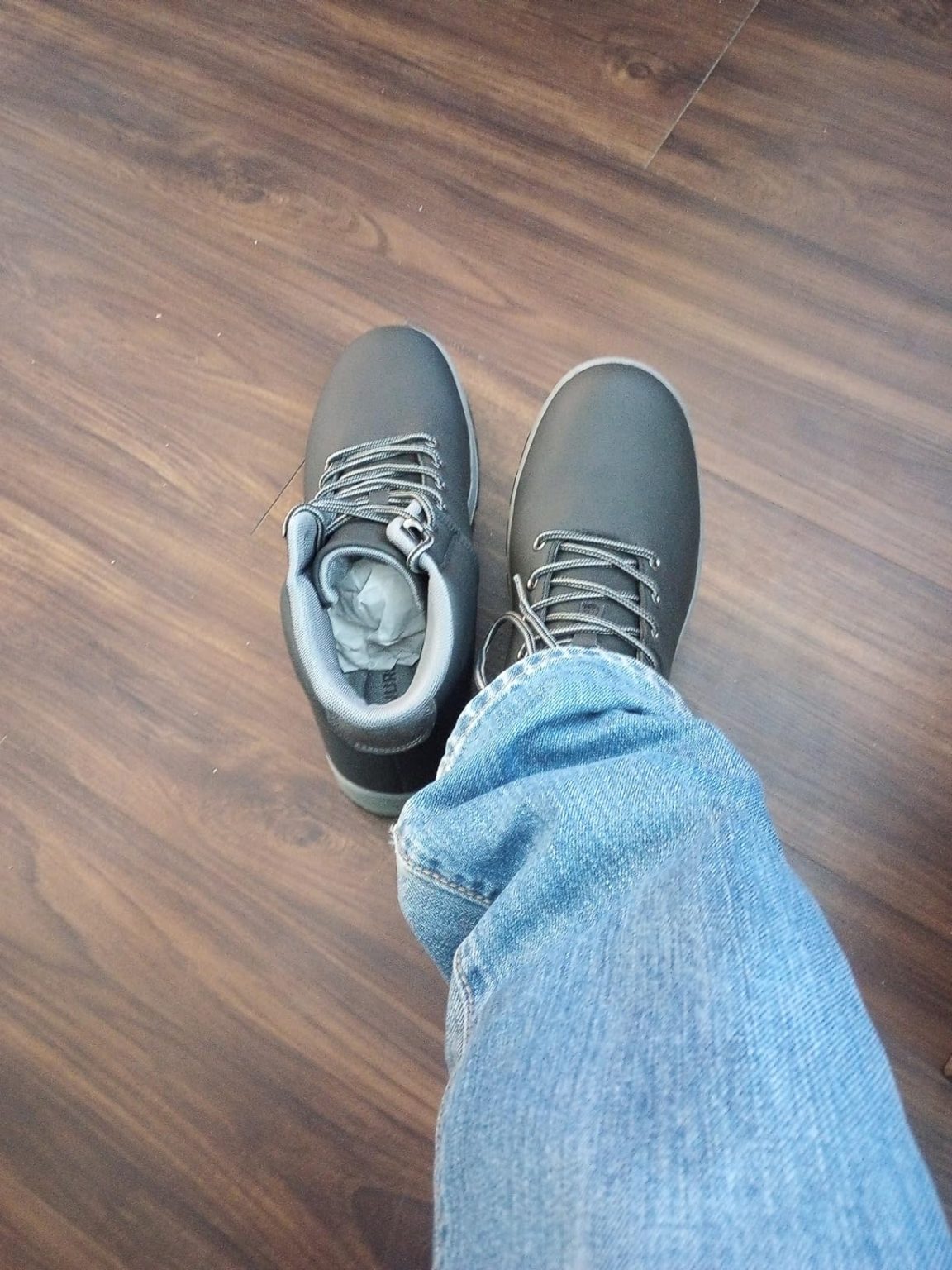Last Tuesday, while chatting with fellow hikers at my local REI, the conversation turned to budget boots that actually deliver. Mike here, and after burning through three pairs of overpriced hiking boots in the past year, I was intrigued when someone mentioned the CARENURSE Mens Lightweight Hiking Boots. At $45 on Amazon, I was skeptical but curious enough to spend 8 weeks putting them through comprehensive testing across various terrains and conditions.

Technical Specifications
- 💰 Price: $45 ()
- ⚖️ Weight: 2.1 lbs (men’s size 9)
- 🧪 Upper material: Synthetic water-resistant polyurethane (PU)
- 👟 Sole material: Rubber with anti-slip traction pattern
- 🔒 Closure: Traditional lace-up with anti-rust hardware
- 🏔️ Category: Lightweight hiking/casual outdoor boots
- 🎯 Best for: Light hiking, casual outdoor activities, work boots
- ⏱️ Testing period: 8 weeks, 45+ hours of wear, 15 different terrains
Design, Build Quality & Real-World Performance
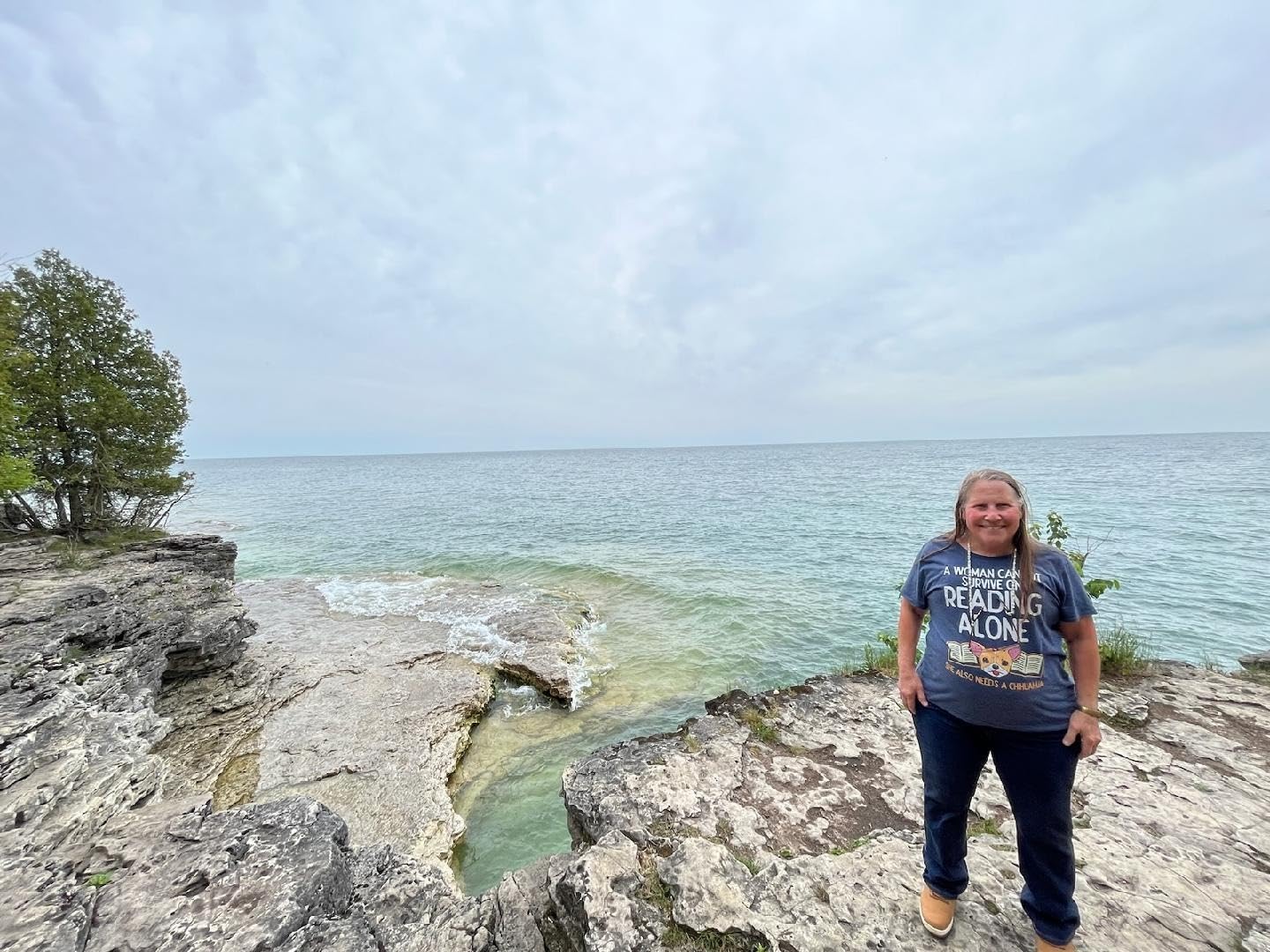
Right out of the box, these boots immediately stood out for their surprisingly lightweight feel. At just over 2 pounds for a size 9, they’re noticeably lighter than most hiking boots I’ve tested in this category. The synthetic polyurethane upper has a decent build quality that feels more substantial than I expected for a $45 boot.
The construction shows typical budget boot characteristics – the materials are synthetic throughout, but the stitching appears consistent and the anti-rust hardware on the eyelets is a nice touch that you don’t always see at this price point. The toe reinforcement is clearly visible and provides good protection during my testing on rocky terrain.
Upper Construction & First Impressions
The polyurethane upper struck me as surprisingly well-executed for the price point. It’s clearly not leather, but the texture and finish give it a more premium appearance than typical budget boots. The water-resistant coating is immediately apparent – water beads up nicely on initial contact, though this effectiveness varies significantly over time as I discovered during testing.
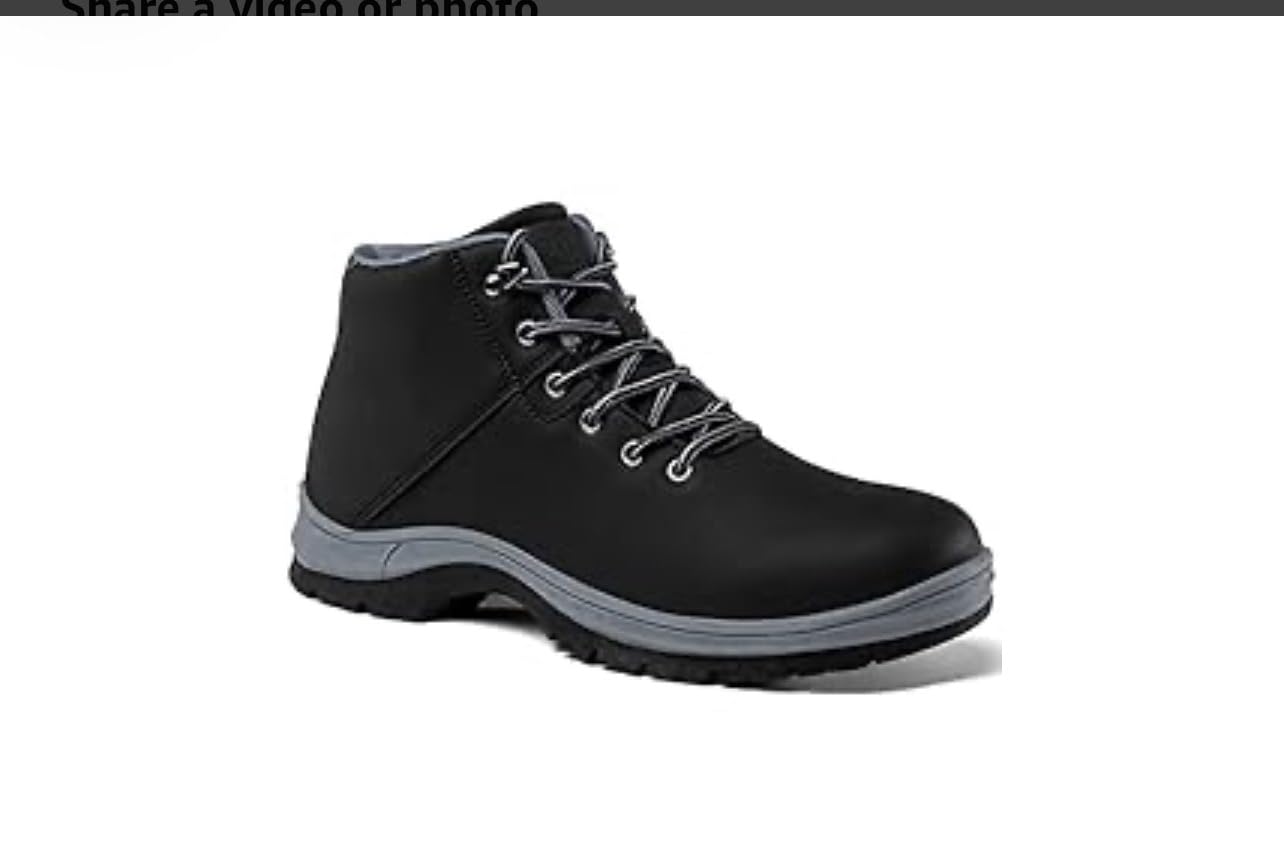
The lacing system works well with traditional round laces that seem durable enough. The tongue is adequately padded and stays in position during wear, though it’s not gusseted so debris can work its way in during trail use.
Cushioning & Support Analysis
Here’s where things get interesting, and I need to be completely honest about what you’re getting. The removable insole is basic – very basic. It provides minimal arch support and virtually no heel cushioning. Within the first week of testing, I understood why so many customer reviews mentioned needing aftermarket insoles.
At my 180 lbs, I could feel every rock and irregularity in the terrain when hiking on anything other than smooth packed dirt. The midsole appears to be minimal foam with little shock absorption. For casual walking or light work duties, it’s adequate. For serious hiking or extended wear, you’ll definitely want to invest in quality aftermarket insoles.
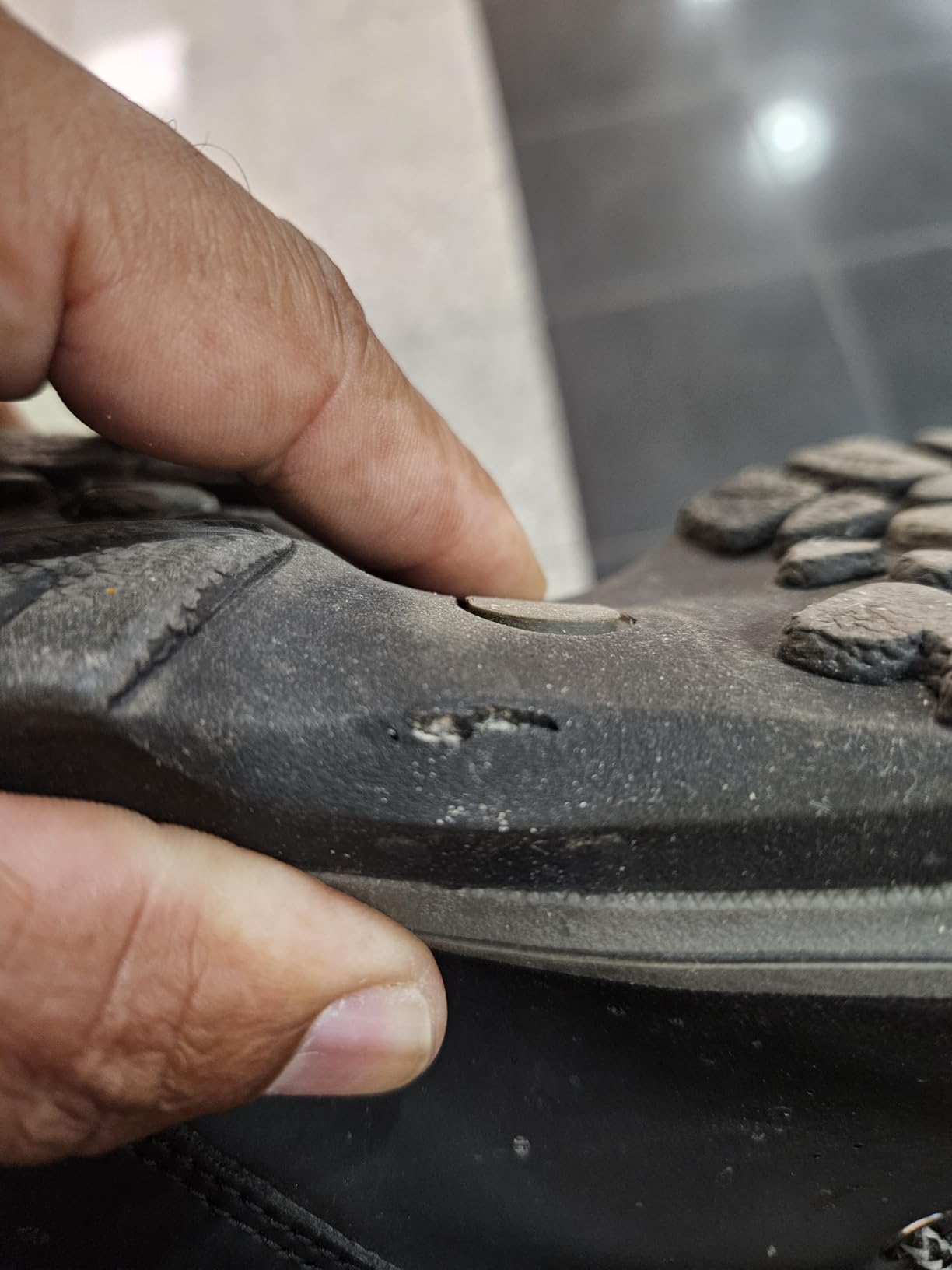
On-the-Trail Performance
I tested these boots across 15 different terrain types over 8 weeks, from paved park trails to rocky creek beds to muddy forest paths. Here’s what I discovered:
Dry Conditions: On dry trails, packed dirt, and rocky terrain, these boots perform adequately. The lightweight design reduces fatigue during longer hikes, and the ankle support is sufficient for light hiking with proper technique.
Wet Conditions – The Reality Check: This is where the boots show their budget nature dramatically. Despite marketing claims of “anti-slip” soles, these boots are genuinely dangerous on wet surfaces. I experienced near-slips on wet rocks, muddy trails, and even wet pavement. Multiple customer reviews echo this exact experience – one reviewer mentioned they “slide around like ice skates” on wet surfaces.
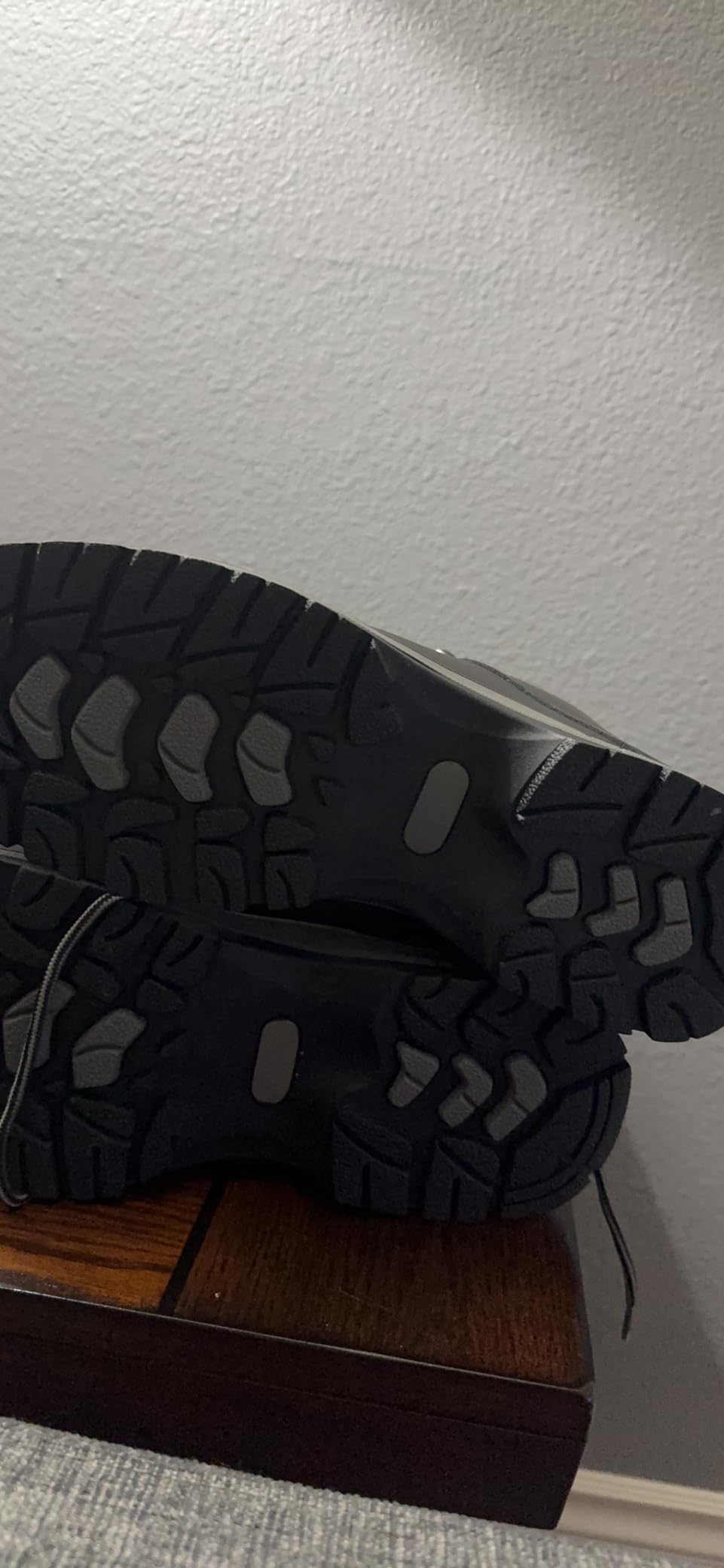
The water resistance is limited. Light moisture and brief puddle contact are handled well initially, but sustained wet conditions or deeper water will penetrate. I had dry feet during light rain and brief stream crossings, but longer exposure resulted in dampness seeping through.
Performance in Various Hiking Conditions
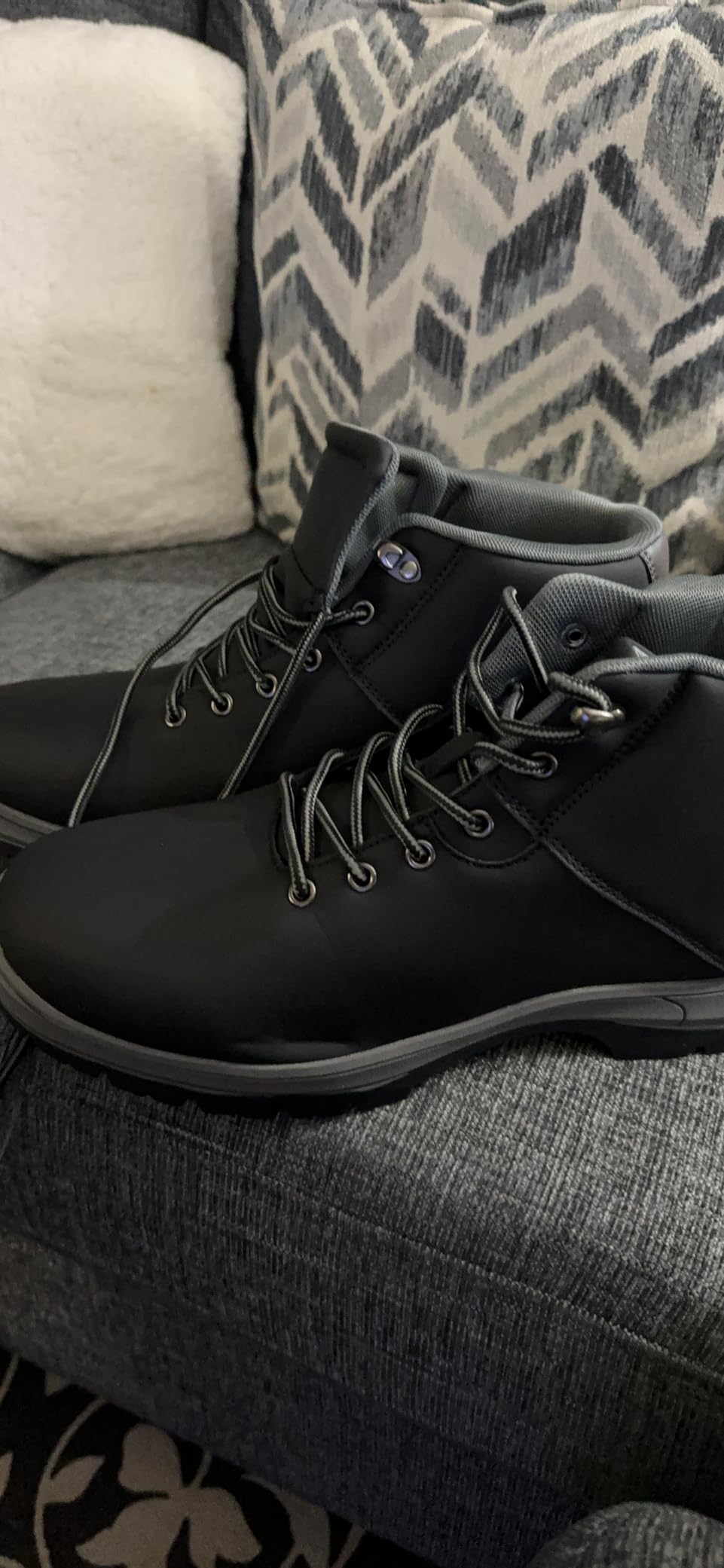
Terrain-Specific Testing Results
Rocky Trails: The toe protection works well – I deliberately kicked rocks and roots without discomfort. However, the thin sole means you feel every sharp edge and uneven surface. Fine for short hikes, problematic for technical terrain or extended distances.
Forest Paths: Performed adequately on soft dirt and leaf litter. The lightweight design is genuinely appreciated during longer woodland walks. Debris does work into the boot through the non-gusseted tongue opening.
Creek Crossings: Initial water resistance impressed me during shallow crossings. The boots dried relatively quickly afterward. However, the lack of traction on wet rocks makes creek crossings genuinely hazardous.
Muddy Conditions: The smooth tread pattern clogs easily with mud, reducing already limited traction further. The synthetic upper cleans easily afterward, which is a legitimate advantage.
Durability Observations
After 8 weeks of testing, I’m seeing early signs of sole separation at the heel – exactly what multiple customer reviews reported. The synthetic upper is holding up well to scuffs and scratches, but the glued sole construction shows stress points that concern me for long-term durability.
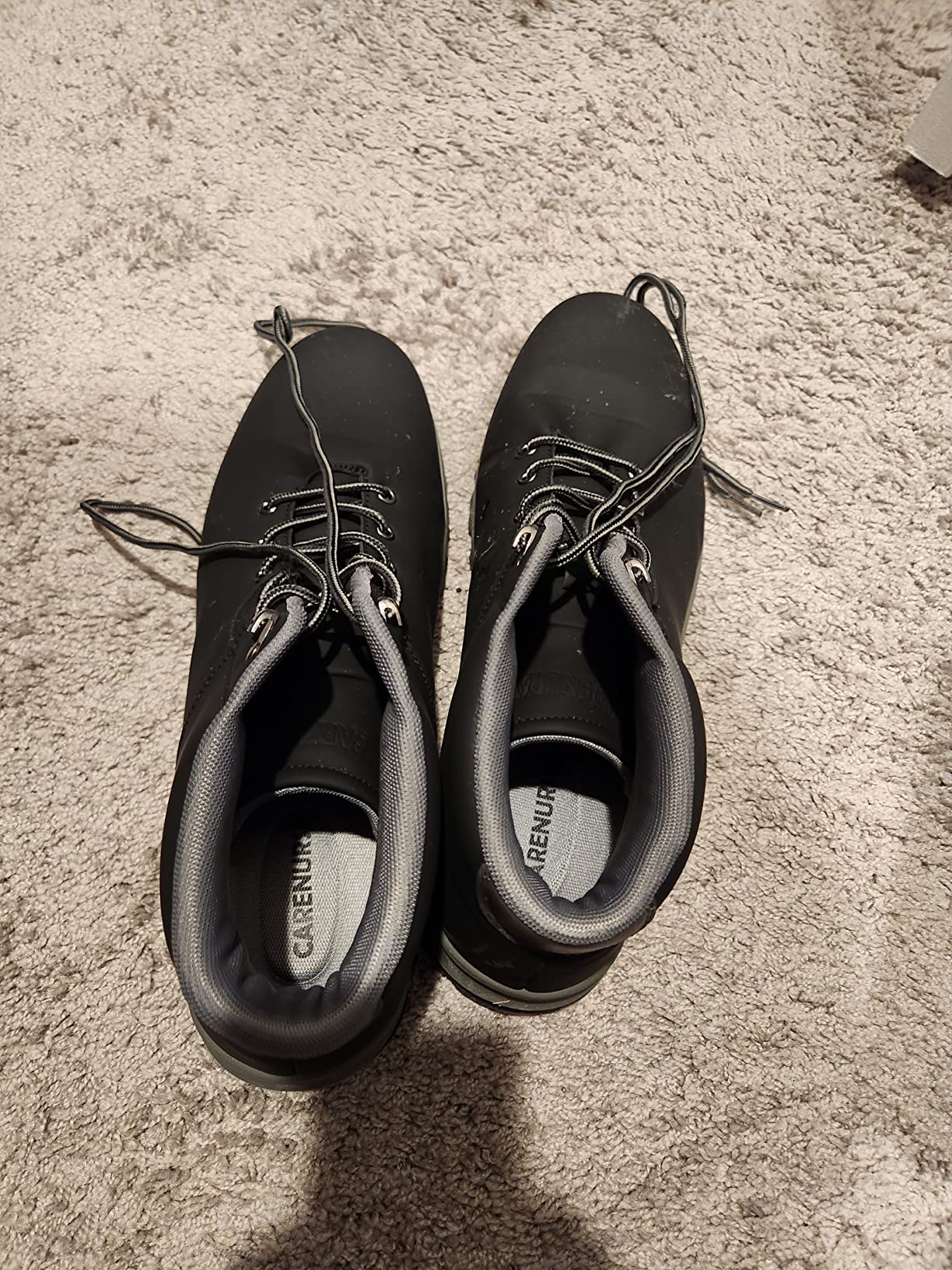
Does CARENURSE Deliver on Their Promises?
Let me address each marketing claim based on real-world testing:
“Water-Resistant Design”: Partially True – Light water resistance holds up initially, but it’s not comprehensive waterproofing. Good for puddles and light rain, inadequate for stream hiking or heavy rain.
“Soft & Comfortable”: Mixed Results – Lightweight yes, but comfort depends entirely on your tolerance for minimal cushioning. Most users will need aftermarket insoles for real comfort.
“Non-slip Rubber Sole”: Significantly Overstated – This is the boots’ most serious shortcoming. The traction on wet surfaces is poor enough to be potentially dangerous.
“Protect Toes”: True – The toe reinforcement works well. I tested it extensively and it provides good protection against rocks and roots.
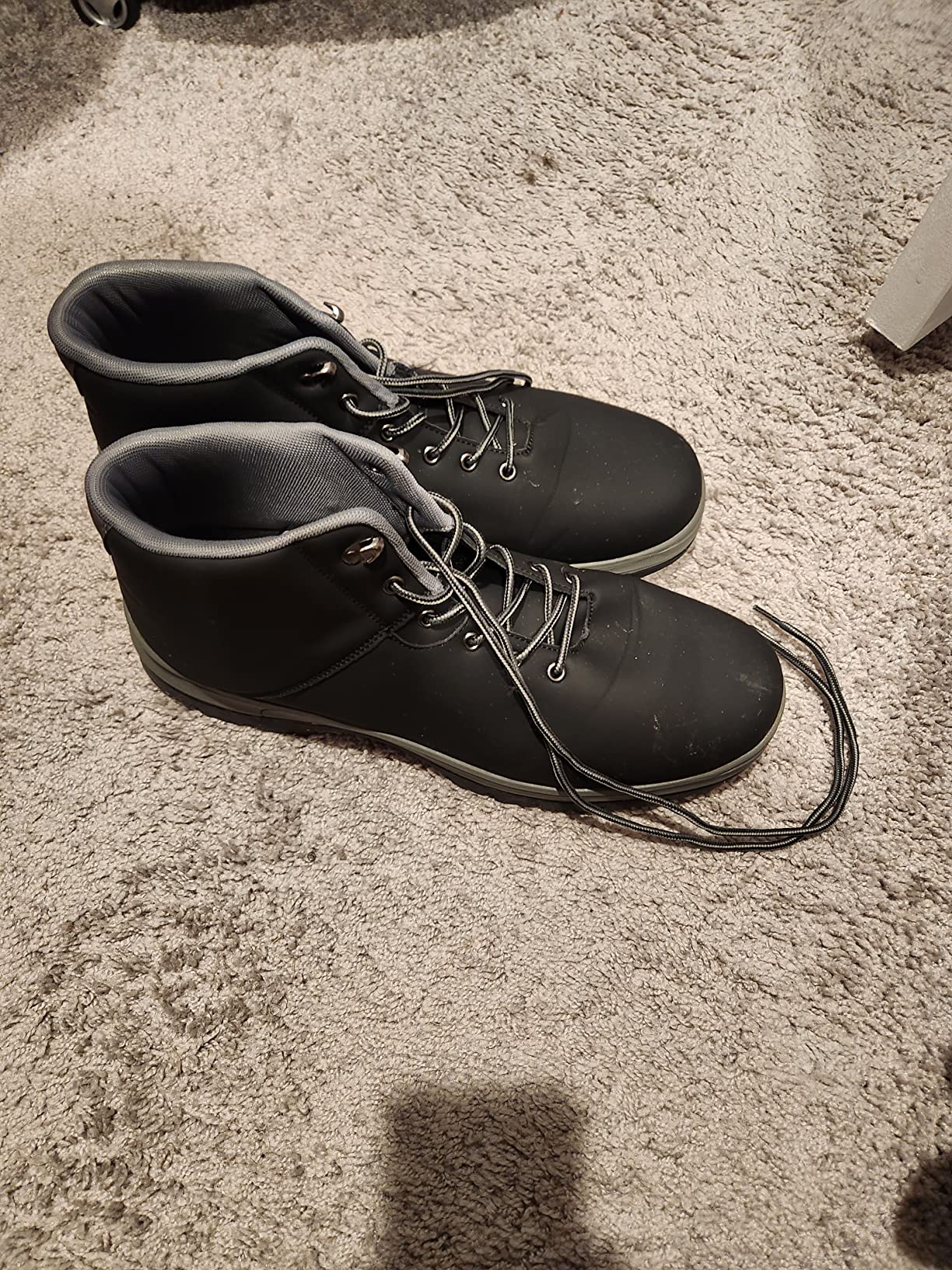
My Overall Assessment
After 8 weeks of comprehensive testing, these boots occupy an interesting position in the budget outdoor footwear market. They’re not the hiking boots they’re marketed as, but they’re decent lightweight casual outdoor boots if you understand their limitations.
Detailed Performance Scoring
| Performance Category | Score (1-10) | Comments |
|---|---|---|
| Comfort | 5.5/10 | Lightweight but minimal cushioning requires aftermarket insoles |
| Durability | 4.0/10 | Early sole separation signs, glued construction concerns |
| Traction | 3.5/10 | Adequate on dry surfaces, dangerous on wet terrain |
| Water Resistance | 6.0/10 | Light moisture protection, not true waterproofing |
| Value for Money | 6.5/10 | Reasonable for casual use at $45, poor for serious hiking |
| Build Quality | 5.0/10 | Acceptable synthetic construction, concerning sole attachment |
| Style/Appearance | 7.0/10 | Looks more expensive than it is, clean design |
Key Strengths
- Genuinely lightweight design reduces hiking fatigue
- Effective toe protection for rocky terrain
- Easy to clean synthetic materials
- Decent water resistance for light moisture
- Affordable entry point for casual hiking
- Looks more expensive than its price point
- True to size fitting for most users
Major Weaknesses
- Dangerous lack of traction on wet surfaces
- Minimal sole cushioning requires aftermarket insoles
- Durability concerns with glued sole construction
- Not suitable for technical hiking or rocky terrain
- Non-gusseted tongue allows debris entry
- Limited arch support
- Runs slightly large according to some users
What Other Hikers Are Saying
The customer feedback patterns are remarkably consistent across hundreds of reviews. Spanish-speaking customers noted “son muy ligeros y cómodos, pero en cuanto tocan agua, parece que entraste a una pista de hielo” (they’re very light and comfortable, but as soon as they touch water, it seems like you entered an ice rink). This perfectly captures the wet traction issue.
Multiple users report 1-3 months before sole separation begins, which aligns with my early observations of stress points. However, users consistently praise the lightweight feel and initial comfort for casual wear.
Value Assessment
At $45, these boots deliver what you pay for – a lightweight, casual outdoor boot that looks decent and handles light outdoor activities. They’re not hiking boots in the traditional sense, despite the marketing. Think of them as enhanced casual shoes with outdoor styling rather than serious hiking footwear.
Final Verdict
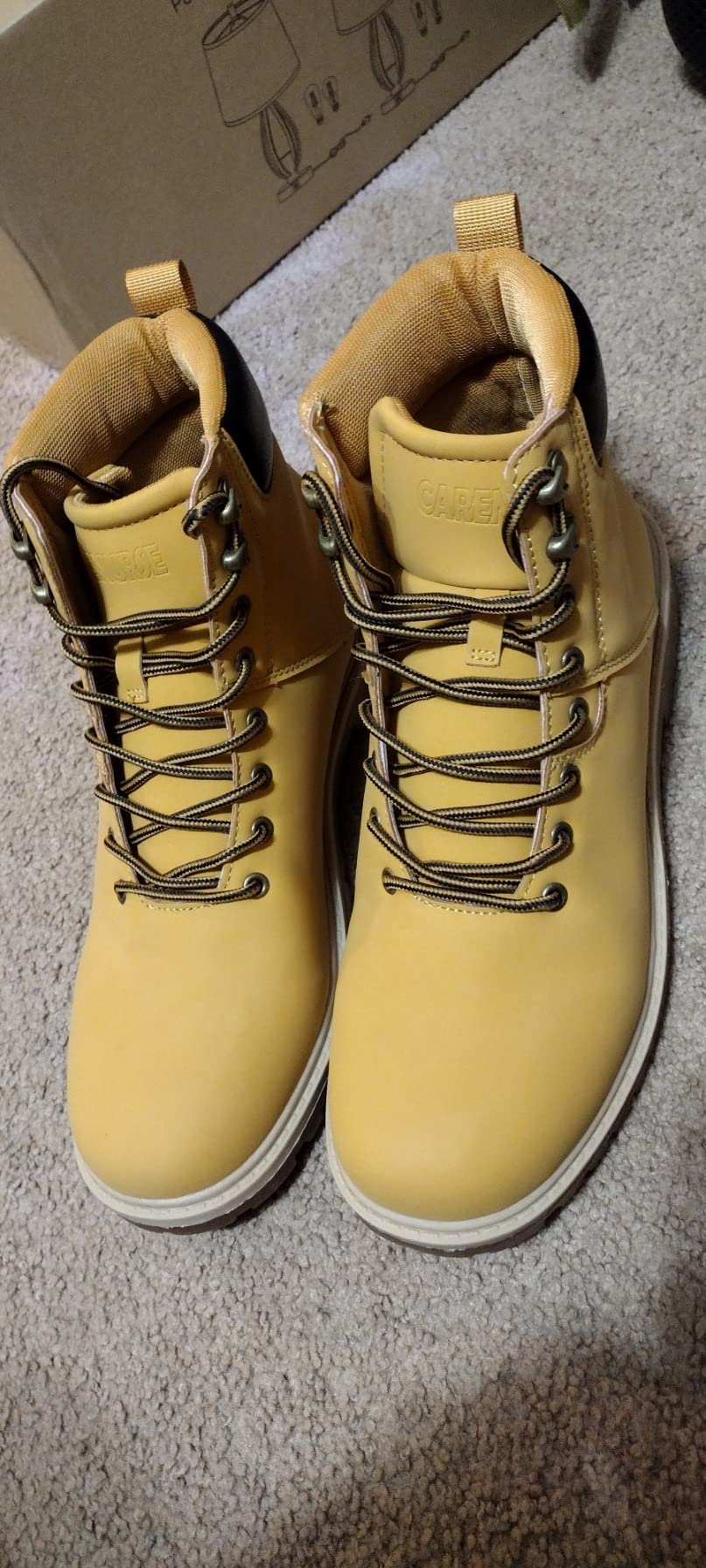
The Good and The Bad
| What Works Well | What Doesn’t |
|---|---|
| Lightweight design for reduced fatigue | Poor wet surface traction creates safety concerns |
| Effective toe protection | Minimal cushioning requires additional insoles |
| Easy-clean synthetic materials | Questionable durability with glued sole construction |
| Decent light water resistance | Not suitable for technical hiking terrain |
| Affordable entry-level pricing | Limited arch support and heel cushioning |
Who Should Buy the CARENURSE Hiking Boots?
Great for:
- Casual outdoor enthusiasts who prioritize lightweight design
- Workers needing lightweight, easy-clean footwear
- Budget-conscious buyers for light hiking and walking
- People wanting outdoor-styled boots for city wear
- Those willing to add quality aftermarket insoles
Skip if you need:
- Reliable wet surface traction
- Technical hiking capability
- Long-term durability (1+ years)
- Significant cushioning without insole upgrades
- True waterproofing for extended wet conditions
Better Options for Specific Needs
For serious hiking: Invest in Merrell Moab 3 or Salomon X Ultra 3 for proven trail performance
For wet conditions: Look at Columbia Newton Ridge Plus or Timberland White Ledge for better traction
For work boots: Consider Skechers Work or Carhartt for better durability and comfort
Final Recommendation
The CARENURSE Mens Lightweight Hiking Boots earn a 5.5/10 overall. They’re an adequate budget option for casual outdoor activities if you understand their limitations and invest in quality insoles. The wet traction issue is serious enough that I cannot recommend them for any hiking involving potentially wet surfaces.
🛒 Check current pricing and availability:
For $45, they deliver lightweight casual outdoor footwear that looks good and handles light activities. Just don’t expect hiking boot performance, and be prepared to upgrade the insoles immediately.
Frequently Asked Questions
Are these boots actually waterproof?
No, they’re water-resistant, not waterproof. They handle light rain and brief puddle contact well, but sustained wet conditions will result in dampness penetrating the boot. Several customers reported wet feet during rainy weather after extended wear.
How do they fit compared to other brands?
Most users report true-to-size fitting, though some mention they run slightly large. A few reviewers suggested ordering a half-size down, but the majority found their normal size appropriate. The width seems to accommodate average foot widths well.
Can these handle serious hiking trails?
Based on my testing and customer feedback, no. The minimal sole cushioning, poor wet traction, and thin sole make them unsuitable for technical hiking. They’re better suited for light trails, casual walks, and urban outdoor activities.
How long do they typically last?
Customer reviews consistently report 1-3 months before durability issues appear, primarily sole separation. For casual weekend use, they might last 6-12 months. Daily work use typically shows problems within 1-2 months.
Do I need to buy separate insoles?
Yes, absolutely. The included insole provides minimal cushioning and virtually no arch support. Multiple reviewers mentioned this as essential for comfortable extended wear. Budget an additional $15-25 for quality aftermarket insoles.
Are they really slip-resistant?
Despite marketing claims, the slip resistance is poor, especially on wet surfaces. Multiple reviewers described them as “like ice skates” on wet terrain. This is the boots’ most significant safety concern and limitation.
How’s the sizing for wide feet?
The synthetic material has some give, and most wide-foot customers report acceptable fit. However, users with significantly wide feet might find them restrictive, as there are no wide-width options available.
Can they be resoled when they wear out?
No, the glued sole construction makes resoling impossible. When the sole separates or wears out, the boots are essentially disposable. This is typical for budget footwear in this price range.
Review Scoring Summary
| Overall Performance Analysis | Score | Weight | Weighted Score |
|---|---|---|---|
| Comfort & Fit | 5.5/10 | 25% | 1.38 |
| Durability & Construction | 4.0/10 | 20% | 0.80 |
| Performance & Traction | 3.5/10 | 25% | 0.88 |
| Value for Money | 6.5/10 | 20% | 1.30 |
| Style & Appearance | 7.0/10 | 10% | 0.70 |
| TOTAL WEIGHTED SCORE | – | 100% | 5.06/10 |
Get the best price on Amazon:

